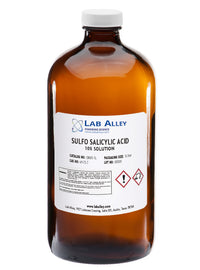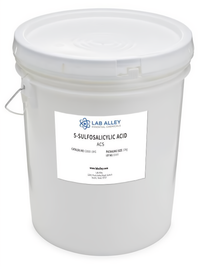Salicylic Acid
Pure Salicylic Acid Powder And Solutions
About Salicylic Acid
Salicylic Acid (IUPAC name 2-hydroxybenzoic acid) has the formula C7H6O3 and is a colorless solid.

It occurs naturally in several plants and is a plant hormone, acting as a signal molecule for biological communications within the plant, and between the plant and its environment. Its name is taken from the Latin salix, referring to the genus of willow trees which contain salicin, a related compound.
Salicylic acid is one of the starting materials in the production of aspirin. It has a wide range of use in the treatment of various minor skin conditions, since it facilitates the removal of the outer skin layer. It also appears as a bismuth salt in stomach-upset remedies such as pink, Pepto Bismol.
Common uses of Salicylic Acid
- Food preservative
- Treatment for various skin conditions including acne
- As a precursor for the production of other chemicals, chiefly aspirin









